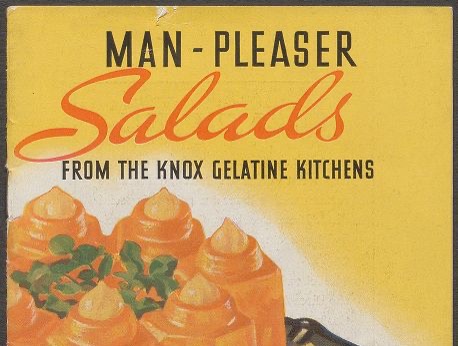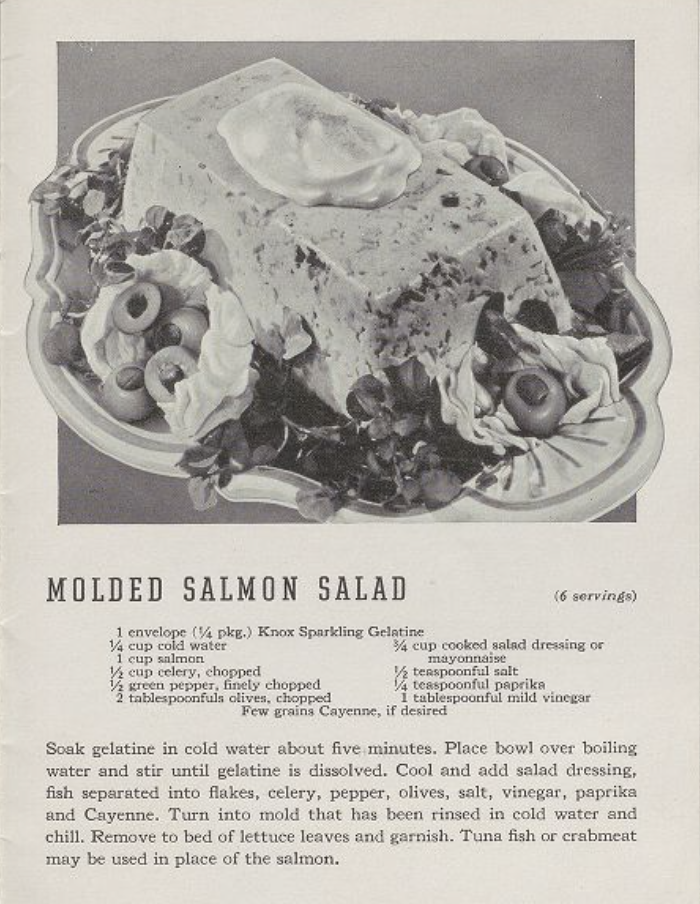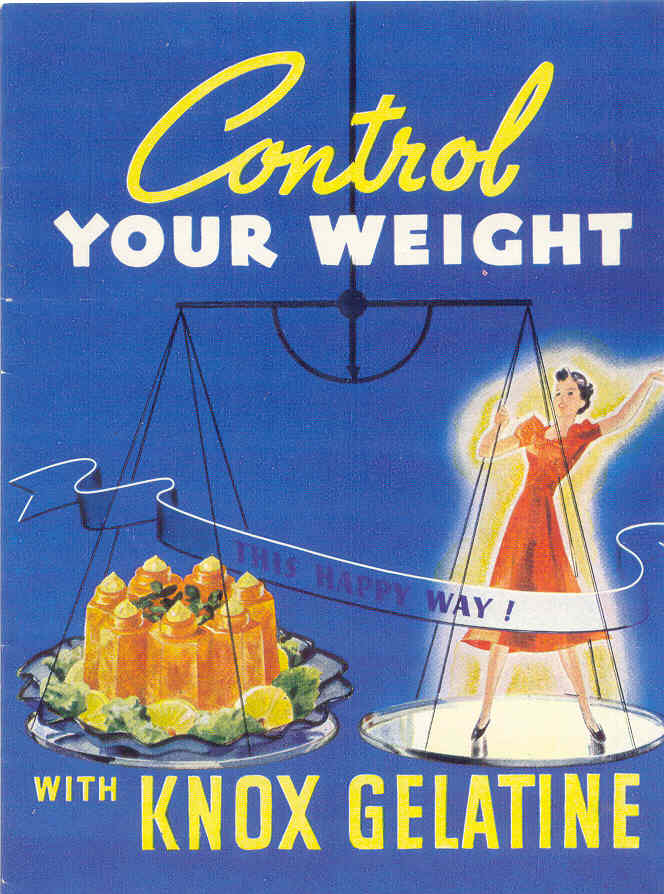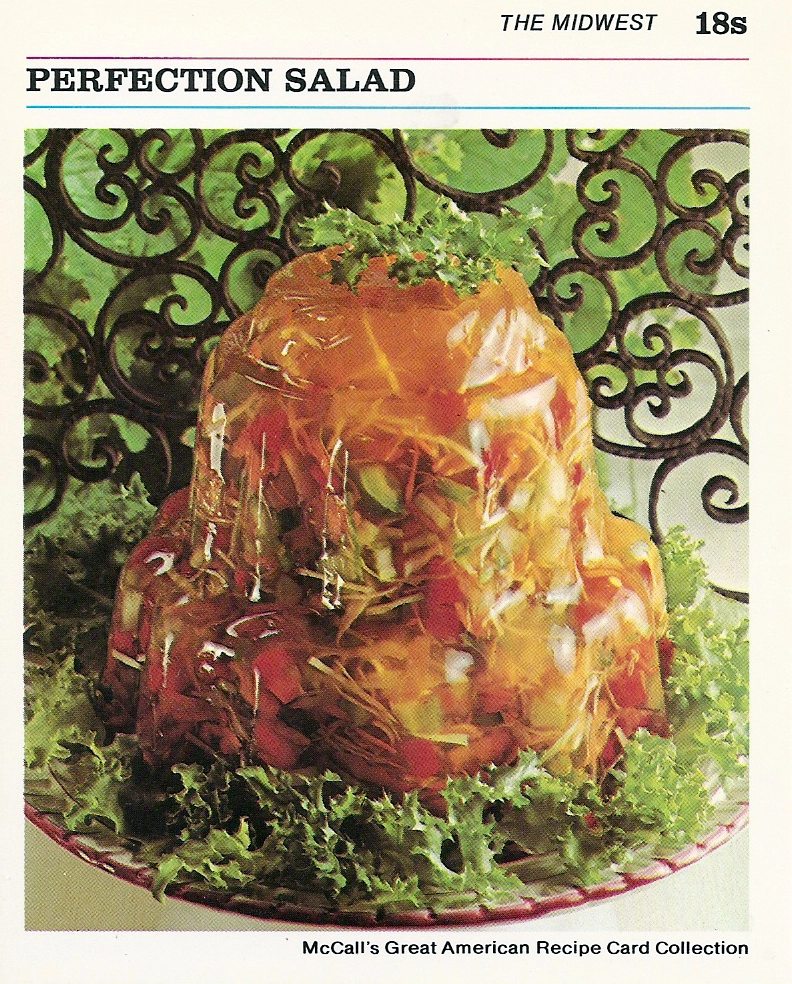Most Americans will have consumed the sweet gelatin-based dessert “Jell-O” at least once in their lifetime. This ubiquitous and nostalgic all-American dessert comes in a rich variety of colors and flavors, most are fruit flavored, but there is also a wide variety of puddings. Gelatin, then, in this context is a product that connotates “sweetness” and “dessert”, but gelatin has a savory sibling… “Molded Salmon Salad” and the “Savory Supper Salad” are recipes that one can find in the little pamphlet “Man-pleaser salads from the Knox gelatin kitchens” from 1938. The history of this gelatin cookbook gives us a unique insight into the gendered world of food in the early 20th century.
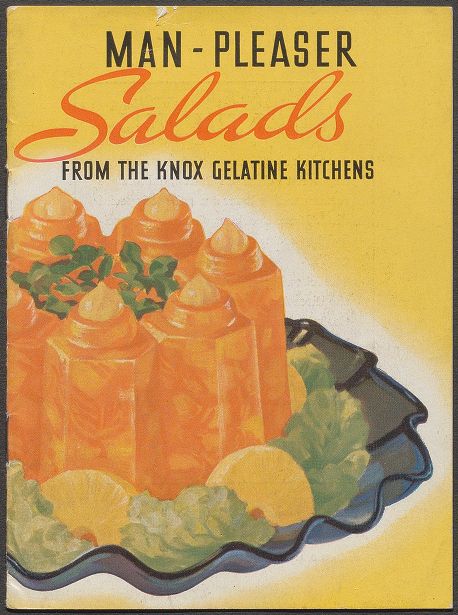
Gelatin, or aspic, was in the pre-industrialized world a luxury household-ingredient. The method of extracting aspic from animal-bones and joints, mostly from pigs or calves, was very time-consuming and not to mention a labor-intensive affaire. This meant that gelatin was a dish for the wealthy, a way to show off that you had enough kitchen staff that could invest the time into making gelatin-based dishes, and, of course, most crucially a way to refrigerate it. In 1894, however, the first packet of gelatin powder by Knox’s “Sparkling Granulated Gelatin” made the food accessible to most American households. The selling trademark of these gelatin dishes was that it could be ‘molded.’ ‘Messy salads’ could be molded into ‘beautiful’ dishes in various shapes and sizes, orderly and sophisticated.
Gelatin and gender
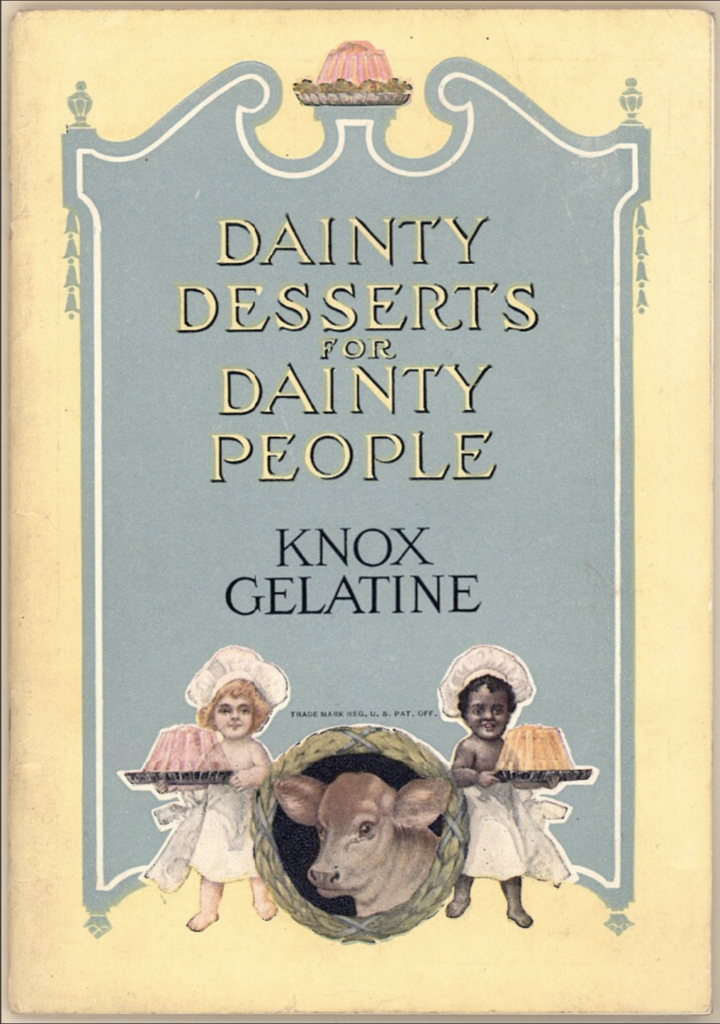
Gelatin-based dishes were, and maybe still are, associated with femininity and childhood. Advertisement for these gelatin dishes, especially desserts, accentuate their feminine and sophisticated character. The 1915 publication of the Knox recipe booklet called: “Dainty Desserts for Dainty People” attests to this gendered targeting of gelatin. Women, or housewives, were traditionally the cooks, the providers of food, within the American household. Traditional gender norms ordained that women belonged in the kitchen. So, naturally, they were the target of most advertisements concerning food. But women were also the targeted consumers of these gelatinous foods. This structured food, besides being ‘dainty’, also fitted in perfectly with the cult of cleanliness of 20th century households surrounding the ideal of femininity.
Domestical cleanliness was paradigmatic of the orderly middle-class white household, it should be orderly and inviting. Salads that cannot fall haphazardly off your plate fits perfectly within that ideal, it is modern, clean, and efficient. Moreover, women could experience creative freedom with the way they could prepare and mold these dishes. Gelatin was accordingly a feminine affaire.
‘Manly’ food was, on the other hand, more meat-centered, more grounded in hearty and substantial meals. The steak embodied masculine food. In Cooking as Men Like It, published in 1930, George Frederick associated overly sweet, processed, and ill-prepared foods with women’s tastes and women’s cooking: ‘‘The male of the human species likes strong flavors. He hates the pallid, pasty, insipid dishes which so many American and English women serve.’’ Among the chapters were “Vegetables Cooked So That Men Won’t Hate Them,” and “Salads That Men Can Endure.”
“Man-pleaser salads from the Knox gelatin kitchens“
“Jellied salads make a big hit with the men if they’re tart and have the fresh taste of honest home ingredients.”
-Knox Gelatine Kitchens
So, if gelatin was associated with ‘dainty dishes’ and femininity, how could you appeal this product to the other half of the population? How did Knox Gelatin Kitchens try to bridge this gap between masculine and feminine food? This “Man-pleaser salads from the “Knox Gelatine Kitchens” booklet was a brave attempt to make gelatin salads more marketable for men.
“It’s easy to win the male vote. The secret of making salads that are sure to win cheers from the men is not a hard one to learn. Here it is … Men like a salad that has a fresh, keen flavor. They abominate a lot of sugar in salads. […] Jellied salads make a big hit with the men if they’re tart and have the fresh taste of honest home ingredients. […] You can’t make such a salad with a gelatine dessert powder. Gelatine dessert powders are 85% sugar, 5% factory flavoring and color – and only about 10% gelatine. But you can make it, to the king’s taste, with Knox Gelatine. Knox Gelatine is all pure gelatine, unflavored and unsweetened.”
So, the message is clear. A salad “to the king’s taste” would contain no sugar and could be served fresh and tart in unsweetened and unflavored Knox Gelatine. This seems to cater to the critique George Frederick had in his attack on women foods. A 1938 foods rubric of the New York weekly The Watchman follows this line of thought. It featured “Man-pleaser salads “Aces” with crack pilot” in which the ‘first pilot chosen by Pennsylvania-Central Airlines’ “stands 6 feet 3 inches in his stocking feet and tips the scales at 190 pounds. Needless to say, he enjoys a hearty appetite and is fond of good food. His pretty wife likes nothing better than to prepare special favorite dishes for him. “’Slim’ loves good tart gelatine salads,” says Mrs. Charmichael.” Next the article adds two salad recipes using Knox unflavored and unsweetened gelatin, the “Pineapple-cheese salad” and the “Perfection salad.” The emphasis on ‘fresh’ and ‘hearty’ in this article should make the gelatin salad more appealing to the man.
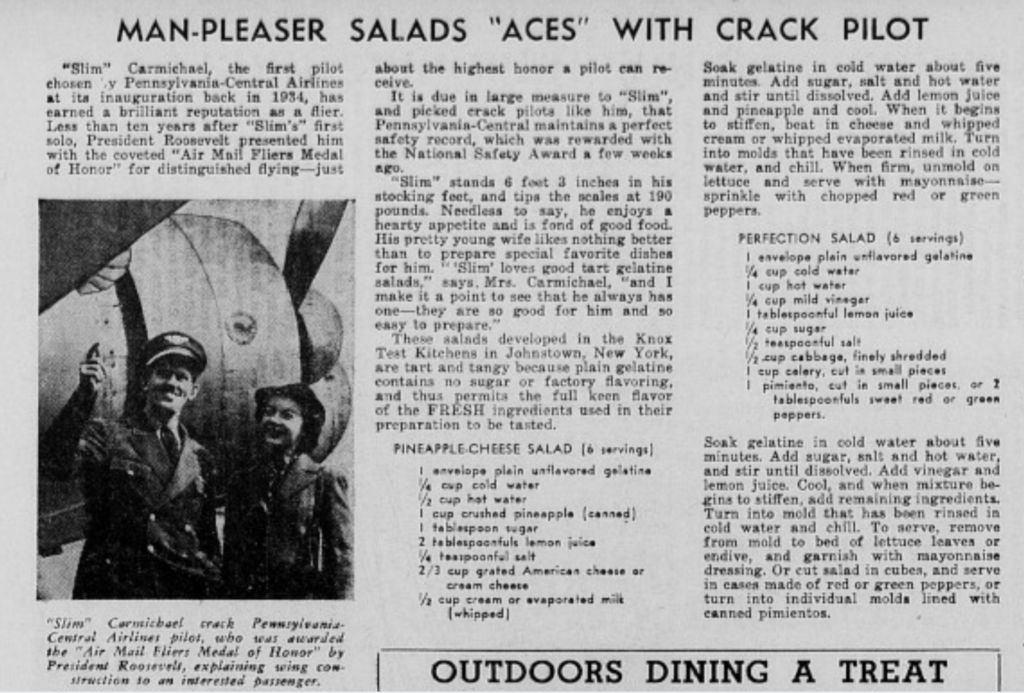
This dichotomous designation of ‘masculine’ and ‘feminine’ foods reveals that food is more than just sustenance, it’s cultured, and it is gendered. Even today we have such a rift in food that follows the traditional gender binary. Feminine food is still considered to be anything ‘light’, a salad for example, or cottage cheese, wine, and yoghurt with fruit. Masculine food, also known as Dude Food, is centered around red meat, hamburgers, bacon, cheese, beer, and whiskey. In any case, we haven’t really outgrown these stereotypical gendered foods that Knox Gelatine helped to promote. We did, however, seem to have outgrown the still baffling idea that salads should be encased in gelatin.
Nina Westland
Further reading:
- https://www.seriouseats.com/history-of-jell-o-salad
- https://www.nytimes.com/2019/11/25/dining/jello-mold.html#:~:text=According%20to%20the%20historian%20Anne,meat%20stock%20and%20tomato%20juice.
- Sherrie A. Inness (ed.), Cooking Lessons: The Politics of Gender and Food (Lanham 2001).
- Jessamyn Neuhaus, Manly Meals and Mom’s Home Cooking: Cookbooks and Gender in Modern America, (Baltimore 2003)
Try making a vintage gelatin salad yourself:
